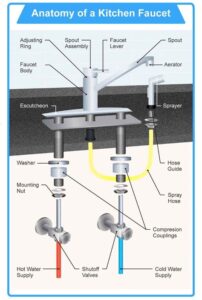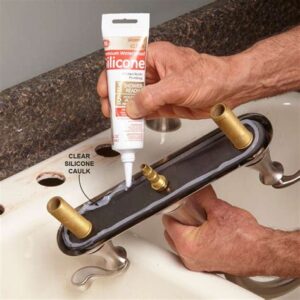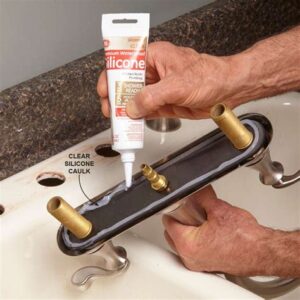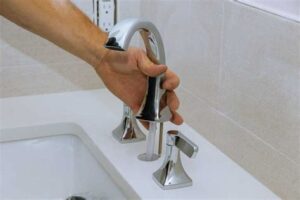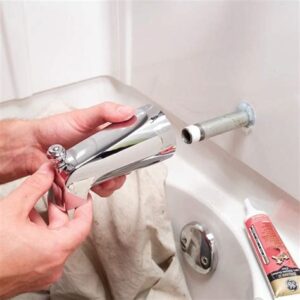Explore essential local regulations for bathtub faucet installations, including permits, compliance, and safety to ensure your plumbing projects meet standards.When it comes to enhancing your bathroom with a new bathtub faucet, understanding local regulations is crucial for a successful installation. Not only do these regulations ensure that your plumbing meets safety standards, but they also protect you from potential legal and financial repercussions. Navigating the maze of permits and codes can be daunting, but our comprehensive guide will simplify the process, highlighting key regulations that affect the materials you can use and the permits you may need. By staying informed, you not only ensure compliance but also contribute to the safety and functionality of your home. Join us as we delve into the essential local regulations governing bathtub faucet installations and equip yourself with the knowledge to make informed decisions.
Understanding Local Regulations For Bathtub Faucet Installations
When it comes to installing a bathtub faucet, understanding local regulations is essential for ensuring compliance and avoiding potential fines. Local regulations can vary significantly depending on your location, so it’s vital to research and adhere to the specific codes set forth by your municipality or county.
Most local regulations focus on various aspects, including plumbing standards, safety measures, and permitted materials. These regulations are designed to protect both the homeowner and the environment. For example, certain jurisdictions may enforce restrictions on water usage, requiring the installation of low-flow fixtures. This is not only in line with conservation efforts but also affects the types of faucets you can install.
Another facet of local regulations pertains to the installation process itself. Some areas may mandate that a licensed plumber carry out the work to ensure safety and proper adherence to code. DIY installations could lead to violations, especially if the work is not up to standard, which can result in costly repairs and legal issues down the line.
Additionally, local building codes often dictate the required placement of faucets concerning water supply lines, ensuring that they meet safety and operational standards. Thus, becoming familiar with your specific local regulations will significantly streamline your bathtub faucet installation process.
In summary, understanding local regulations is crucial when installing a bathtub faucet. Not only do these regulations help in meeting safety and operational standards, but they also ensure compliance, thereby helping you avoid fines or the need for costly repairs.
Key Local Regulations Impacting Plumbing Materials Used
When it comes to installing a bathtub faucet, understanding the local regulations that govern the use of plumbing materials is crucial. These regulations are put in place not only to ensure safety but also to promote sustainability and efficiency. Below are some key factors to consider regarding local regulations impacting plumbing materials:
- Material Standards: Local regulations often specify which materials can be used in plumbing systems. Commonly accepted materials include copper, PVC, and PEX, each with its own set of guidelines and best practices for installation.
- Lead-Free Requirements: Many jurisdictions have adopted lead-free laws that restrict the use of lead in plumbing materials. This ensures the safety of drinking water and protects public health, so using certified lead-free components is mandatory.
- Water Conservation Measures: Local codes may include regulations that promote water-saving fixtures and fittings. By ensuring your faucet meets this criterion, you contribute to environmental protection and may even qualify for rebates or incentives.
- Certification Requirements: Certain materials may require specific certifications that guarantee their quality and safety. For instance, in many areas, the use of fixtures and fittings must be certified by approved testing organizations.
- Compatibility with Local Water Supply: Local regulations may dictate materials based on specific water quality. Using components that are not compatible with local water conditions can lead to premature failure or contamination.
Adhering to these local regulations can help ensure that your bathtub faucet installation complies with safety standards and operates effectively. Always check with your local building authority before proceeding with any installation to ensure compliance with current regulations.
Permits Required: Navigating Local Regulations Effectively
When planning to install a bathtub faucet, it is crucial to consider the necessary permits required by local regulations. These regulations can differ from one jurisdiction to another, impacting everything from the installation process to the materials you can use. Failing to obtain the proper permits can lead to significant penalties, including fines and the potential requirement to redo work that does not meet code.
To navigate these local regulations effectively, follow these key steps:
Obtaining the proper permits not only ensures compliance with local regulations but also safeguards your investment and enhances the overall safety of your plumbing system. By taking these steps seriously, you can navigate the regulations with confidence and ensure a successful bathtub faucet installation.
Consequences Of Ignoring Local Regulations In Plumbing
Ignoring local regulations when installing a bathtub faucet can lead to a myriad of serious consequences. Not only can these oversights result in financial implications, but they can also jeopardize the safety and structural integrity of your home. Here are some key repercussions to consider:
1. Financial Penalties: Many jurisdictions impose fines for non-compliance with local regulations. These penalties can vary greatly depending on the severity of the violation and whether it’s considered a repeat offense.
2. Increased Repair Costs: Failing to adhere to local regulations may lead to plumbing failures or discrepancies during inspections. This could necessitate costly repairs to rectify issues that arise from improper installations. In some cases, you may need to redo the entire installation to meet compliance standards.
3. Safety Risks: Local regulations are put in place to ensure that plumbing installations adhere to safety standards. Ignoring these can increase the risk of leaks, water damage, or even accidents that could lead to injuries. For instance, improperly installed fixtures may become loose over time, resulting in water hazards.
4. Insurance Complications: Homeowner’s insurance policies may not cover damages caused by non-compliant installations. In the event of a plumbing failure, insurance claims could be denied due to failure to follow local regulations, leaving you to foot the bill for repairs and damages.
5. Reduced Property Value: Failure to comply with local regulations can impact your property’s value. Prospective buyers may be deterred by the potential risks and liabilities associated with unpermitted work, leading to lower offers or extended time on the market.
6. Troubles with Future Renovations: Non-compliant installations may create challenges for future renovations or updates. If local inspectors discover previous violations, they may require you to bring everything into compliance before approving new work.
In conclusion, understanding and abiding by local regulations is crucial not only for the legality of your plumbing work but also for ensuring the safety and value of your home. Prioritizing these regulations can save time, money, and stress in the long run.
How Local Regulations Ensure Safety And Compliance When Installing Faucets
Local regulations play a critical role in ensuring the safety and compliance of plumbing installations, including bathtub faucets. These regulations are designed not only to standardize installations but also to protect the health and safety of the homeowners and their families.
One of the primary ways local regulations ensure safety is by establishing clear standards for plumbing materials and installation methods. For example, regulations often dictate the types of materials that can be used, such as lead-free pipes and fixtures, which help prevent contamination of drinking water. Additionally, regulations may require specific installation techniques to prevent leaks, which can lead to water damage and mold growth, posing health risks.
Compliance with local regulations also involves passing inspections by certified professionals. These inspections serve as a checkpoint to verify that installations adhere to safety standards, ensuring that any plumbing work—like bathtub faucet installation—is done correctly and safely. In the event of non-compliance, property owners may face fines, and in some cases, they are required to redo work to meet the established codes.
Furthermore, local regulations often incorporate guidelines from larger governing bodies, such as the International Plumbing Code (IPC). Adhering to such codes ensures that bathtub faucet installations not only meet local standards but also align with national safety practices, providing an extra layer of protection for homeowners.
Ultimately, local regulations provide a framework that safeguards public health and maintains the value of residential properties. By following these regulations during bathtub faucet installations, homeowners can enjoy peace of mind knowing that their plumbing systems are both safe and compliant.
Frequently Asked Questions
What local regulations should I be aware of when installing a bathtub faucet?
Local regulations can vary by city or state and may include plumbing codes, water conservation rules, and specific installation guidelines for shower and tub faucets.
Do I need a permit to install a bathtub faucet?
In many areas, a permit may be required for plumbing modifications, including faucet installation. It’s best to check with your local building authority.
Are there specific brands or models of bathtub faucets that comply with local regulations?
Some local regulations may specify the use of water-saving fixtures. It’s important to choose faucets that are certified as compliant with these standards.
What are the consequences of not following local regulations for faucet installation?
Not following local regulations can lead to fines, forced removal of the installation, or issues when selling your home, as the work may not pass inspections.
How can I ensure my installation meets local plumbing codes?
To ensure compliance, consult the local plumbing code, hire a licensed plumber, and consider having a professional inspection after installation.
Are there any safety regulations related to bathtub faucet installation?
Yes, safety regulations may include guidelines for preventing scalding, proper installation of fixtures, and ensuring accessibility for all users.
Where can I find information about local regulations for my specific area?
You can find information about local regulations through your city or county’s building department website, local plumbing codes online, or by consulting with a licensed plumber.
{
"@context": "https://schema.org",
"@type": "FAQPage",
"mainEntity": [{
"@type": "Question",
"name": "What local regulations should I be aware of when installing a bathtub faucet?",
"acceptedAnswer": {
"@type": "Answer",
"text": "Local regulations can vary by city or state and may include plumbing codes, water conservation rules, and specific installation guidelines for shower and tub faucets."
}
},{
"@type": "Question",
"name": "Do I need a permit to install a bathtub faucet?",
"acceptedAnswer": {
"@type": "Answer",
"text": "In many areas, a permit may be required for plumbing modifications, including faucet installation. It's best to check with your local building authority."
}
},{
"@type": "Question",
"name": "Are there specific brands or models of bathtub faucets that comply with local regulations?",
"acceptedAnswer": {
"@type": "Answer",
"text": "Some local regulations may specify the use of water-saving fixtures. It's important to choose faucets that are certified as compliant with these standards."
}
},{
"@type": "Question",
"name": "What are the consequences of not following local regulations for faucet installation?",
"acceptedAnswer": {
"@type": "Answer",
"text": "Not following local regulations can lead to fines, forced removal of the installation, or issues when selling your home, as the work may not pass inspections."
}
},{
"@type": "Question",
"name": "How can I ensure my installation meets local plumbing codes?",
"acceptedAnswer": {
"@type": "Answer",
"text": "To ensure compliance, consult the local plumbing code, hire a licensed plumber, and consider having a professional inspection after installation."
}
},{
"@type": "Question",
"name": "Are there any safety regulations related to bathtub faucet installation?",
"acceptedAnswer": {
"@type": "Answer",
"text": "Yes, safety regulations may include guidelines for preventing scalding, proper installation of fixtures, and ensuring accessibility for all users."
}
},{
"@type": "Question",
"name": "Where can I find information about local regulations for my specific area?",
"acceptedAnswer": {
"@type": "Answer",
"text": "You can find information about local regulations through your city or county’s building department website, local plumbing codes online, or by consulting with a licensed plumber."
}
}]}
Post Views: 47

